How to make a sustainable fleet strategy work during economic uncertainty
To reduce emissions and manage costs during an economic downturn, fleet managers should look to the long-term benefits of carbon reduction. Find out how maintaining your sustainable fleet initiatives during a time of economic slowdown will support your business now and into the future.


During economic uncertainty, leaders tend to gravitate to familiar ways of doing business and eliminate projects not tagged as core to operations.
Sustainability efforts, often viewed as providing long-term benefits over short-term profits, may take a back seat as leaders focus on cost-cutting, immediate returns and managing competing priorities. However, a sound sustainable fleet strategy can not only keep you on track to reduce emissions but also help you reduce maintenance and fuel costs, improve your brand reputation and comply with regulations.
In order to capitalize on these benefits, fleet managers should consider several factors, including business drivers and opportunities within their organization, and set their sights on how sustainable fleet initiatives reduce operational costs over time.
In this blog, we'll explore recommendations to help you keep your emissions reduction efforts at the forefront when faced with tough economic conditions.
Rightsize your fleet
Fleet rightsizing or asset utilization helps you answer, “is my fleet being used to its full potential?” In other words, it helps you measure the efficiency of your fleet by analyzing how much of its potential is being utilized. It’s an essential part of fleet management, particularly during times of economic uncertainty, when operations might temporarily be scaled back.
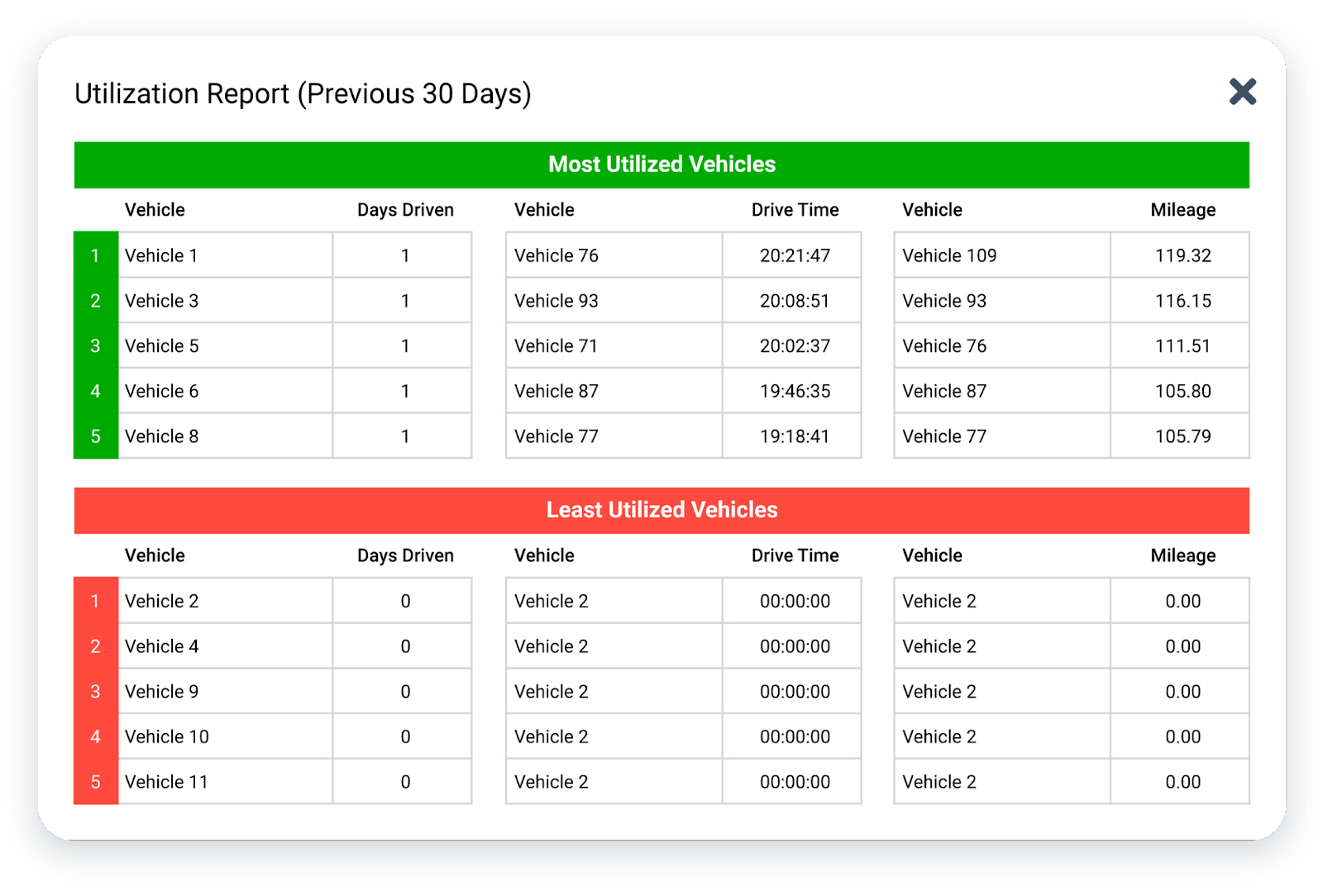
Once you’ve determined the utilization rate of your fleet (dividing the number of hours a vehicle was used by the number of hours it was available for use), you can identify underutilized assets and analyze usage patterns to determine why vehicles are not being used to their full potential. This analysis can help you make adjustments, such as improving scheduling or reallocating vehicles with low demand.
By having the right type of vehicle at the right locations available at the right time, fleet managers can reduce costs, and improve their profitability by maximizing the productivity of their fleet.
Good maintenance and repair practices
Proper vehicle maintenance is one of the most important things fleet managers can do to reduce costs and emissions.
Properly maintained vehicles run more efficiently, use less fuel and have less downtime for repairs. That means fleet managers can operate vehicles more profitably and keep them on the road longer – all while cutting down on fuel costs and emissions from excessive idling or unnecessary wear and tear.
Well-maintained fleet vehicles are generally more fuel-efficient as well resulting in lower fuel consumption and emissions and cost savings over the long term.
Optimize your routes
Efficient route planning can lower the overall expense of running your fleet. By implementing the right plan, you can save on fuel, maintenance and repair costs, better allocate your resources and keep emissions down.
You can find the best routes that reduce the distance traveled and the amount of time spent on the road by using tools that monitor variables like traffic patterns, road conditions and vehicle type.
Route optimization can help in reducing travel distance, cutting down on driving time, and avoiding traffic and other risks on the road. By ensuring vehicles take the shortest, most direct routes possible, fuel and other costs can be kept down while reducing GHG emissions.
Optimizing routes can also help fleet managers allocate resources more efficiently. Enabling drivers to complete more deliveries or pickups in less time reduces the need for overtime or additional staff.
Reduce idling
Excessive idling can be very costly to business operations due to wasted fuel and significant fines in some countries, regions and cities. It also increases wear and tear on the engine and other components, leading to higher maintenance and repair costs. According to Popular Mechanics, idling can cause fuel to wash away the oil lubricating the motor, causing friction that ages the engine prematurely. When idling is reduced so are maintenance and repair costs and the life of the vehicle is extended.
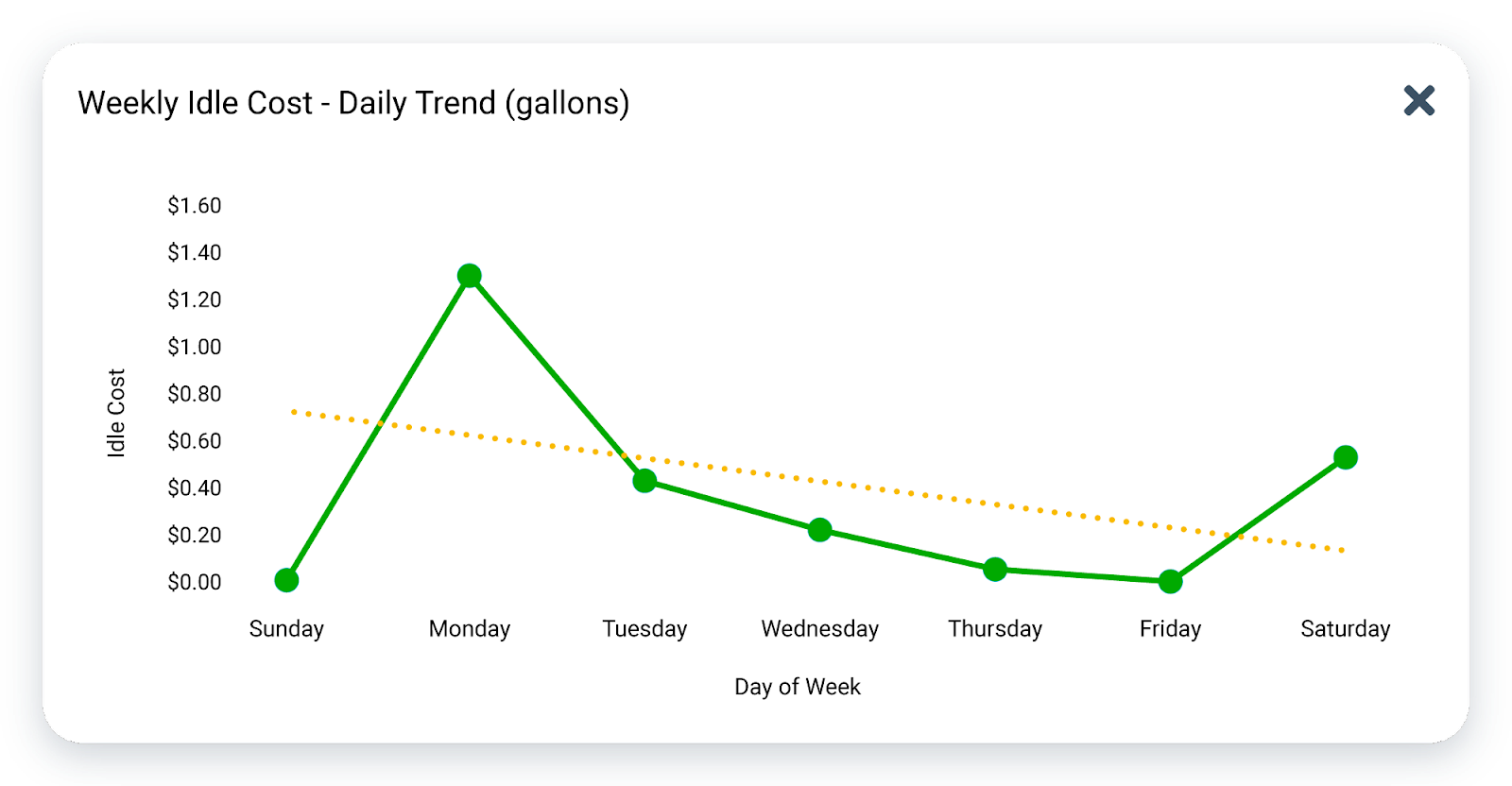
Idling is also a major source of emissions. A study by the University of Waterloo in Ontario, Canada found that a diesel bus loses 2,000 litres per year to idling. Furthermore, a report by the U.S. Environmental Protection Agency found that the transportation industry is the biggest contributor to U.S.-based GHG emissions at 27%.
There are several ways businesses can improve on idle time. Telematics systems can provide data on the amount of idle time per vehicle and driver, which can be used to identify areas for improvement. When Orkin, a pest control and home services company, noted that idling was negatively affecting emissions goals and fuel savings, they took action to reduce it. By curtailing their fleet's idling by 8.4%, Orkin saved an estimated $50,000 in just three months. Businesses can also set idle reduction policies and educate their drivers on the negative effects of idling that include guidelines for maximum idle time and penalties for those who don’t comply.
Reducing idling is not only a quick-hit way to save on fuel it also helps companies avoid potential regulatory fines or other penalties.
Think long-term and continue to invest
Although it’s wise to contain costs, postponing new investments can jeopardize performance long-term.
Adding EVs to a fleet will help move sustainability goals forward. Still, purchasing vehicles is costly, and fleet operators may be tempted to cut back on these investments to save money while weathering the storm. Doing so, however, puts you at risk of falling behind competitors who are looking to the future and sticking to their long-term plan.
If, for example, you’re planning on incorporating battery electric vehicles (BEVs) or plug-in hybrid electric vehicles (PHEVs) into your fleet, make sure you’re looking at the big picture – not just upfront costs but the overall total cost of ownership (TCO). In addition to cheaper fuelling costs, EVs experience significantly fewer maintenance needs, major repairs and downtime compared to diesel and gasoline vehicles. Plus, battery ranges continue to improve and charging infrastructure in many regions is scheduled to ramp up significantly in 2023.
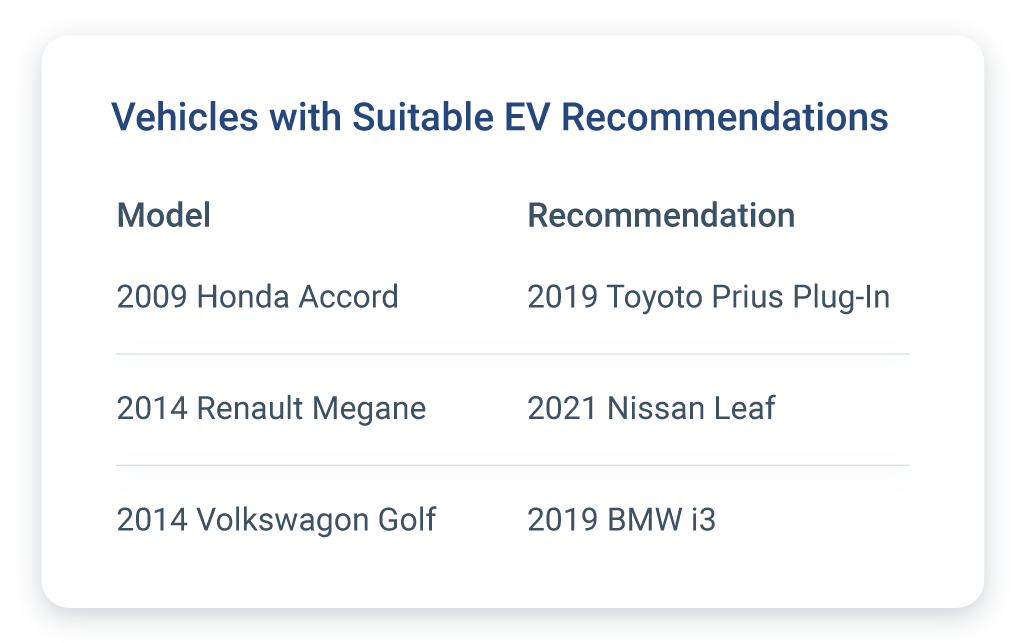
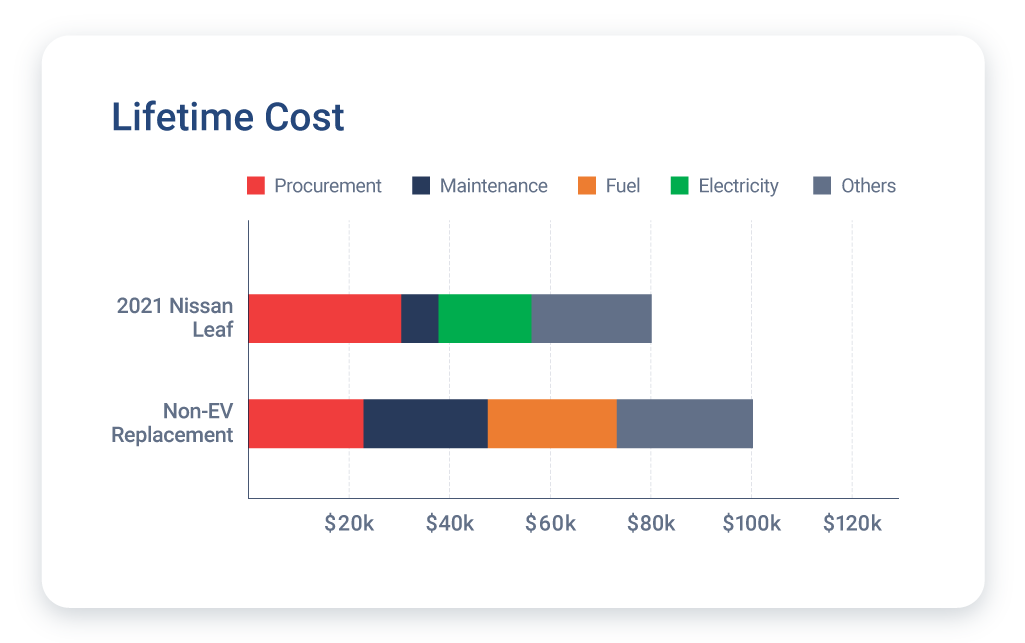
Economic downturns are a natural part of the business cycle. So continuing to invest in the future of the business places you in a stronger, more resilient position when the economy improves.
Unlock insights with quality data
When it comes to your fleet, data is power. All of the improvements we’ve covered in this blog can be attained by driving your decision-making based on insights from quality data.
Telematics solutions provide valuable vehicle data that can help you evaluate the effectiveness of your existing fleet programs and identify opportunities for improvement. By analyzing this data, you can optimize your fleet, increase productivity, improve efficiency and reduce fleet risk. For example, fleet data analytics can help you identify areas where you can save on fuel costs and improve delivery times by analyzing routes and identifying areas for improvement. You can also schedule maintenance more efficiently by monitoring vehicle performance and identifying issues before they become major problems. Additionally, telematics data can give you the power to pinpoint areas where driver behavior can be improved, such as speeding or excessive idling, so you can promote more efficient driving habits and reduce fuel costs.
Take advantage of financial incentives and other programs
Governments worldwide have adopted a strong position on reducing carbon emissions in the transportation sector. It’s important to gather information on any specific regulations, targets or mandates that apply to your organization’s fleet. All levels of government (federal, state/provincial and municipal) may have introduced regulations that could directly impact your ability to operate normally. For example, some governments are banning the sale of new ICE vehicles. Others are restricting where ICE vehicles can operate or subjecting these vehicles to fines.
While governments are pushing for progress, they are also providing some assistance. Many states and cities offer tax breaks for businesses that invest in renewable energy sources or purchase electric vehicles. You may also qualify for federal tax credits if your company purchases a new vehicle with lower emissions than those already in the fleet.
You can find information about alternative fuel vehicle incentives by visiting the U.S. Department of Energy’s Alternative Fuels Data Center.
Realize the benefits of a sustainable fleet
Sustainability is an area of fleet management that requires looking beyond the immediate, direct impact to your bottom line. Although it may seem counterintuitive, fleet managers should stay steadfast in keeping long-term sustainability goals a top priority at times of economic uncertainty, focusing on the bigger picture benefits which include reducing operational costs over time. In doing so, companies can position themselves for long-term success through better efficiency.
To get the insights you need to reduce fleet emissions and drive your sustainable fleet strategy forward, visit our sustainability fleet solutions page.
Subscribe to get industry tips and insights
Table of Contents
Subscribe to get industry tips and insights
Related posts

What is government fleet management software and how is it used?
April 10, 2025
3 minute read
.jpg)

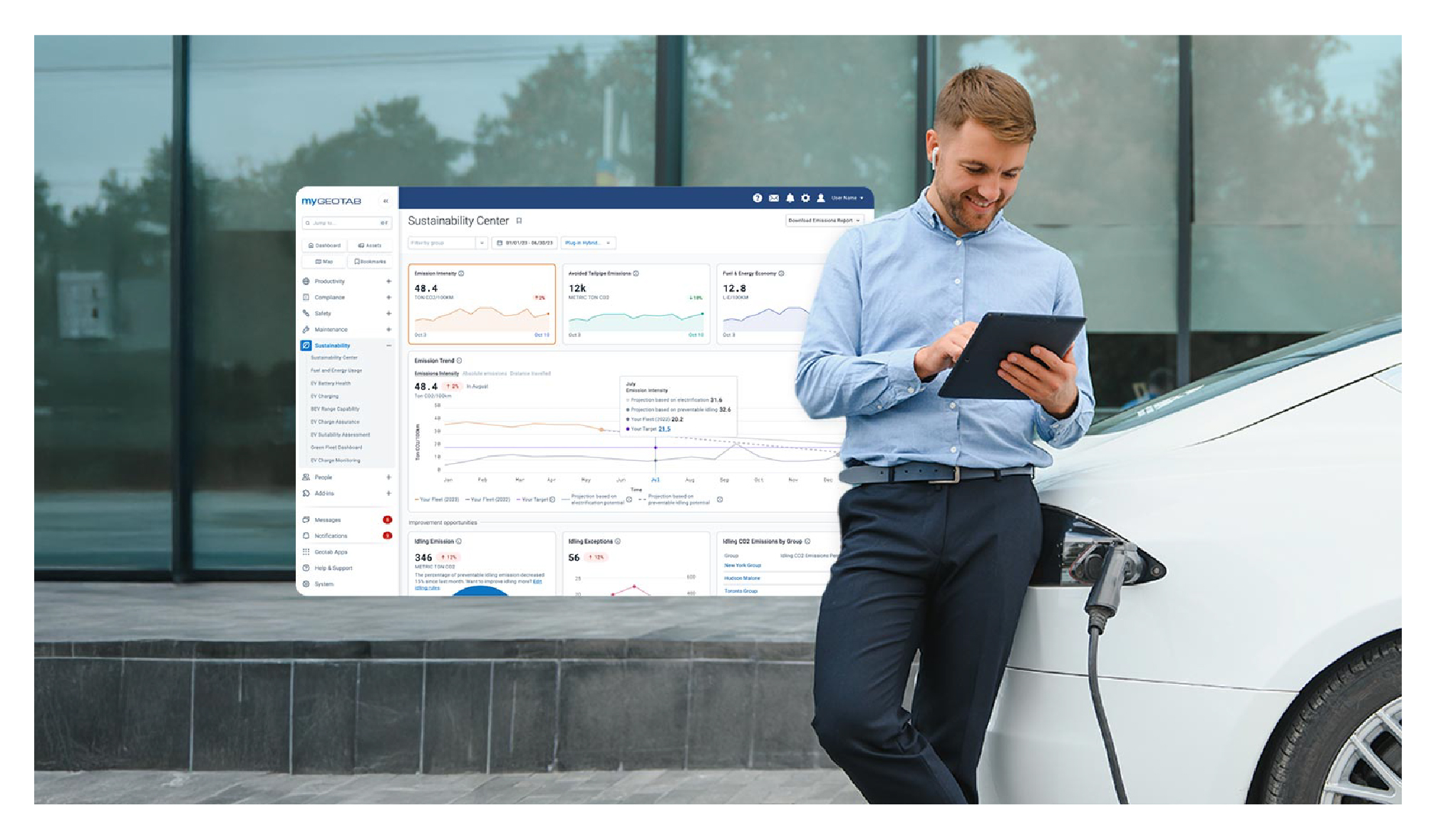
Geotab’s new fleet Sustainability Center simplifies fuel and emissions reduction
March 3, 2025
3 minute read

Driver incentive programs to improve safety, retention and fleet efficiency
February 7, 2025
4 minute read
